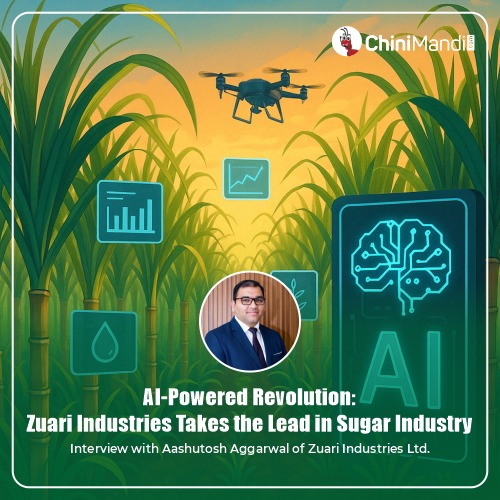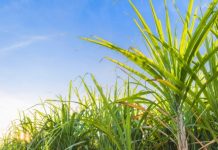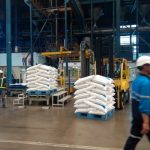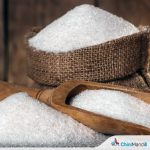In an age where technology is reshaping traditional industries, the sugar sector is also undergoing a digital transformation. Leveraging cutting-edge technologies like artificial intelligence (AI) and others, forward-looking sugar mills are driving improvements in productivity, recovery rates, and ultimately, farmer incomes. A prime example of this innovation is Zuari Industries Limited’s Gobind sugar mills–Aira (GSMA), located in Lakhimpur Kheri, Uttar Pradesh.
One of the oldest integrated facilities in the region, GSMA houses a 10,000 TCD daily crushing capacity, a 30.85 MW co-generation power plant, and a state-of-the-art 125 KLPD ethanol distillery. Through its flagship Cane Excellence Program, GSMA is demonstrating how strategic planning and tech integration can turn conventional sugarcane farming into a high-yield, sustainable enterprise.
In a conversation with ChiniMandi’s Editor Prakash Jha, Aashutosh Aggarwal, Strategy & Business Growth Leader at Zuari Industries Limited, shared insights into how AI-driven interventions are transforming their operations from field to factory, optimising the entire supply chain.
Zuari’s model for growth amid industry decline
Despite broader industry challenges, GSMA reported higher cane crushing, sugar production, and improved recovery. Aggarwal attributed this performance to a robust long-term strategy across its Sugar, Power & Ethanol (SPE) division, anchored by three key excellence programs:
- Operational Excellence
- Sugarcane Excellence
- Production Excellence
Under the Sugarcane Excellence program, Zuari built partnerships among industry stakeholders, research institutions, and farmers. Through 55 demonstration plots, yield increased from 550 to 800 quintals per hectare.
A key tool in this strategy was the Saksham App, developed to centralize farm-level data, including soil sampling, sowing schedules, intercropping patterns, irrigation methods, and fertilizer usage. It facilitated real-time communication between the mill and farmers and enabled prompt grievance redressal.
“Everything was calendarized and digitally tracked. We also shared best practices via video tutorials and live sessions. Farmers were receptive, and adoption rates were high,” said Aggarwal.
Dr. Fawzia, the company’s empanelled soil-water expert, conducted field visits and interactive sessions with farmers to ensure widespread adoption of these practices.
Digital solutions and varietal innovation
Discussing varietal replacement, Aggarwal stated that Zuari created a digital model to guide the process.
“Using Intelligent Character Recognition (ICR), we filtered data based on soil and land type, girth, sucrose content, fibre percentage, and disease resistance. This allowed us to shift from 5–7 varieties to 13 optimized ones, including 15023, 94184, 14203, and CO118.”
The Saksham App also captures detailed grower profiles, crop observations, loan data, and survey reports. It is geo-fenced to prevent false data entry, functioning only when the user is physically present on their field.
AI-driven logistics and recovery optimization – a pivot in progress
Logistics have also been transformed. All transport trucks are GPS-tagged, with real-time alerts triggered if delays exceed 15 minutes. Trucks are color-coded—green for en route, yellow for queued, orange for in transit, and red for idle—reducing diversion and inefficiencies.
“We also implemented a three-day forecasting model to streamline indenting, improve communication, and optimize crushing quantities,” Aggarwal explained.
Truck holding times at collection centers have dropped significantly, from peaks of 20–50 minutes to under 10 minutes in most cases, leading to more trips and increased efficiency.
These technological initiatives have yielded remarkable results. Sugar recovery rates have improved from 9.8–10.3% to 11.24%. The mill also achieved its earliest start in 70 years, commencing operations on October 27 and closing on March 29.
“We are also using a Business Intelligence dashboard that provides real-time updates on cane quality, factory operations, and performance of our distillery and power plant,” said Aggarwal.
Farmer adoption and support systems
When asked about resistance from farmers in adopting digital tools, Aggarwal acknowledged initial hesitation.
“Many farmers were reluctant at first. But when they saw the direct economic benefit, higher yields translating to higher income, they began embracing the technology. Our field staff and awareness programs played a big role. This year, we plan to adopt 250 demonstration plots.”
For those without smartphones, Zuari implemented an IVRS system and set up four call center numbers. Last year, over 1,000 farmer calls were received and resolved, with call penetration increasing from 11% to 83%. “Even farmers who don’t use smartphones are being helped by their children to interact with us digitally,” he added.
Scaling up and the future of AI in sugar
On commercialization, Aggarwal said the platform is now ready to be rolled out to other mills.
“We began with the Gobind sugar mill, but now we are ready to scale. We are also working on industry partnerships and developing our own GPT models tailored for the sugar industry.”
The success of the Cane Excellence Program sheds light on the importance of strategic planning, innovative practices, and continuous monitoring in driving farm excellence. Moving forward, Zuari’s focus will be on further digitalization, strengthening industry-academia relations, and expanding capacity-building initiatives.
- Zuari’s AI strategy is built around five core pillars:
- Business Intelligence & Decision Support
- Real-time Plant Performance Monitoring
- Predictive Analytics
- Business Optimization
- Custom Digital Applications & Automation












